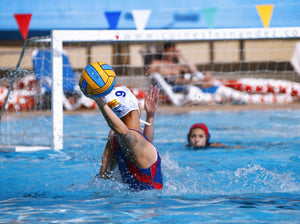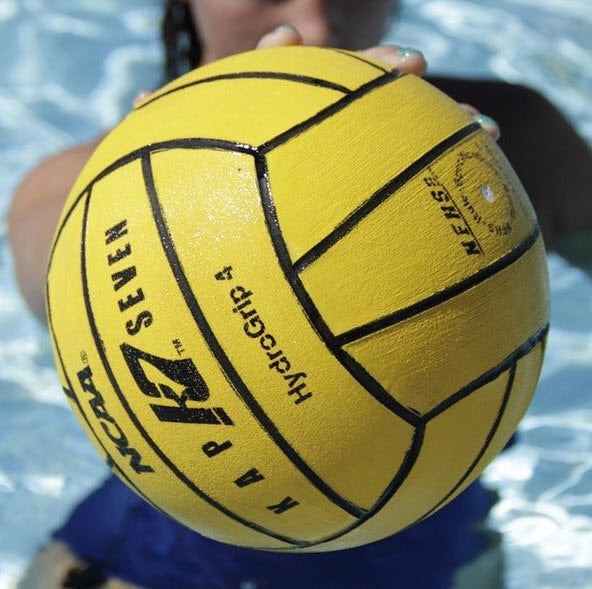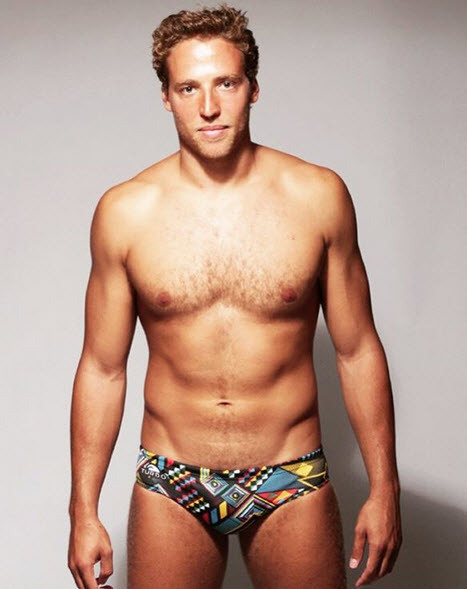Types of Wet Shots in Water Polo
 Although all wet shots are taken from a horizontal position and have some basic strategies in common, each one requires slightly different technique. Check out the guide "How to Take a Wet Shot in Water Polo" for more information on when and how to approach a wet shot.
Although all wet shots are taken from a horizontal position and have some basic strategies in common, each one requires slightly different technique. Check out the guide "How to Take a Wet Shot in Water Polo" for more information on when and how to approach a wet shot.
Once you've got the timing and the basic idea down, it is time to refine your shooting style. Seasoned water polo players usually have a favorite type of wet shot, but it is a good idea to master them all. The three main wet shots used in water polo are described below.
Lots of water polo players approach a wet shot afraid that the goalie will attack them or anxious that their defender will manage to prevent the shot. Instead of a negative attitude, remember that the player in position to take a wet shot is the player with the best position in the water. Take the shot with confidence and aggression, not the expectation of failure.
The Shove Shot
Possibly the most basic of all wet shots, the shove shot will seem the most natural to players still learning the wet shot. To perform the shove shot, start dribbling the ball toward the goal. Grab the ball with one hand and continue swimming, keeping the ball in your hand as you stroke. Never let it go underwater. As you approach the two-meter line, slow down. It may be a good idea to switch to eggbeater.
When you are ready, pull the ball back to your shoulder and then push it into the goal. The shove shot is very hard for goalies to predict since if performed correctly, all arm motions will be exactly the same while leading up to the shot as when actually shooting. It also allows players good control over the placement of the shot.
Most wets shots won't have time for a fake. However, if you are using the shove shot and you have time, fake a shot to throw the goalkeeper off, before sending the ball to the other side of the cage.
The Screw Shot
The screw shot uses a screwing motion to propel the ball into the cage and only requires one hand to shoot the ball.
To set up the screw shot, dribble the ball towards the goal. While swimming, drive your non-dominant hand underwater and push the ball towards your shooting hand. On the next stroke, drive your shooting hand under the ball, palm-up. Holding the ball, pull your elbow back until the ball is next to your face, right in front of your shoulder. The ball should still be on the surface of the water with your hand underneath it.
Switch from flutter kick to eggbeater at this point to maintain stability during the shot. You now have the option to shoot the ball or take another stroke with your free arm. Taking another stroke will throw the goalie off, but can also ruin your body position. With one smooth “screwing” motion, push the ball towards the goal by simultaneously straightening your arm and rotating your hand inward, finishing with your thumb pointing down.
The Tee Shot
A lot of things that need to happen at once for the tee shot to work. First, positioning the ball for the tee shot happens while dribbling the ball toward the goal. Next, it requires coordinated movements from both hands as one tees the ball up, and the other pushes it towards the goal. When performed correctly, though, tee shots can be one of the most effective and surprising wet shots.
If you’re ready to tee the ball up, take a stroke with your weak hand. Slide the hand under the ball and — holding it with just your fingertips — draw the ball in close to the shoulder of your shooting hand. Meanwhile, take a stroke with your strong hand. By the time your arm is out of the water, the ball should be teed up.
Form the fingers of your shooting hand into a point, and push them through the middle of the ball as you straighten your arm. You’ll be hitting the ball mainly with your index, middle, and ring fingers. The speed with which you hit the ball and the accuracy with which you place your fingers will determine how effective the tee shot is.
Rather than holding the ball far away from your shooting hand, draw it in close to your face before the tee shot. This might feel counterintuitive, but makes for a stronger and more accurate tee shot.
Wet Shots Are Important
Having solid wet shots is a valuable addition to any player's shooting arsenal. It is especially important to be comfortable with wet shots since nearly all of them are performed in high-pressure situations. It will take a fair amount of practice before any of the above wet shots feel completely natural, so work them into your regular practice as much as possible. After all: It is far better to flub a shot in practice than it is in a game!



